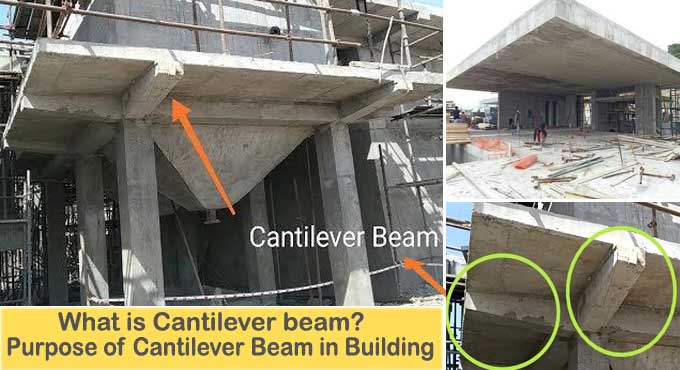
Definition and Uses of Cantilever Beams
The cantilever beam is a beam that is fixed at one end and is free at the other end. It distributes the load back to support that force against a moment and shear stress. A cantilever beam allows the creation of a bay window, some bridges, and balconies.
The cantilever beam carries a specific weight on its open end due to the support on its enclosed end. The load would generate on beam structure that is breaking down as a result of the shear stress.
- Without external support pillars, cantilever construction allow for overhanging structures, and with trusses or slabs, cantilever beams can construct. Ensure the load is static. Support forces and moments in all directions must fix.
- A balcony is a fine example of a cantilever beam. It supports at one end only. The rest of the cantilever beams extend over open space to support it.
- Cantilever deflects more because they only support from one end. There is less support for the load to transfer. In a few different ways, cantilever beam deflection can calculate from simplified cantilever beam equations or cantilever beam software and calculators.
Cantilever Beam
The shear stress and a moment at the point of attachment resist the support where load applies. The beam has experienced a shear stress parallel to the z-axis (vertical) and a moment with axial loading. This moment consists of a force in an instantaneous rotation axis.
Cantilever Beam Uses
No supporting columns or bracing, cantilevers provide a clear space underneath the beam with the introduction of steel and reinforced concrete cantilevers became a popular structural form.
The cantilever beam uses in:
- In Buildings.
- Cantilever bridges.
- Overhanging projections and elements.
- Balconies such as at Frank Lloyd Wright?s Falling Water.
- Machinery and plants such as cranes.
- Overhanging roofs like shelters and stadium roofs.
- Shelving and Furniture.
1. There are various applications of the cantilevered beam like carrying a gallery, roof, runway for an overhead traveling crane, or part of a building above in building constructions. It uses various structures such as sun sheds, shelves, large halls, exhibition buildings, and armories.
2. For large spans in particular sites, the cantilever construction employs heavy loading in bridge building, and the Forth Bridge Scotland is composed of three cantilevers with two connecting suspended spans.
3. In 1866 the first cantilever bridge in modern history was built by Heinrich Gerber takes the influence from ancient Chinese bridges.
Pros of Cantilever Beam
This beam has some following advantages like:
- In constructions, these beams are simple.
- On the opposite side, it does not require support.
- This beam generates a negative bending moment which counteracts the bending moment of back spans.
- Because of the beam added to the cantilever arms, the span can be greater than that of a simple beam.
- Thermal expansion and ground movement are simple to sustain because the beam is resting simply on the arms.
- Due to their depth, cantilever beams are very rigid.
Cons of Cantilever Beam
This beam has some following disadvantages like:
- These beams have large deflections.
- This beam generally results in higher moments.
- You need to check for the uplift of the far support and either need to have fixed support or have a back span.
- The moment at the fixed end is higher when the beam loads at one end. If more load is applied then it can break from the support.


